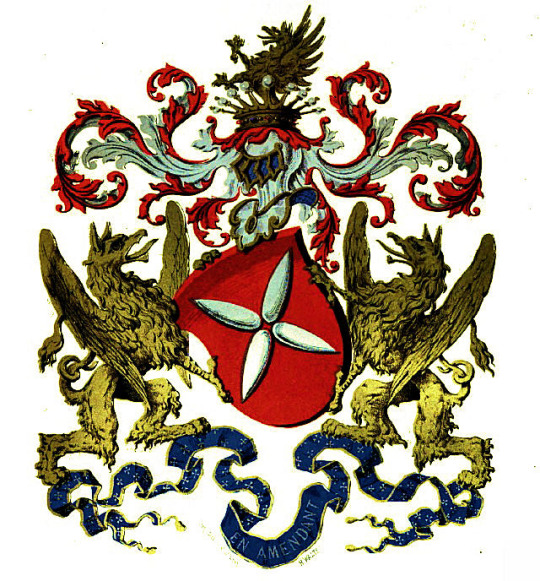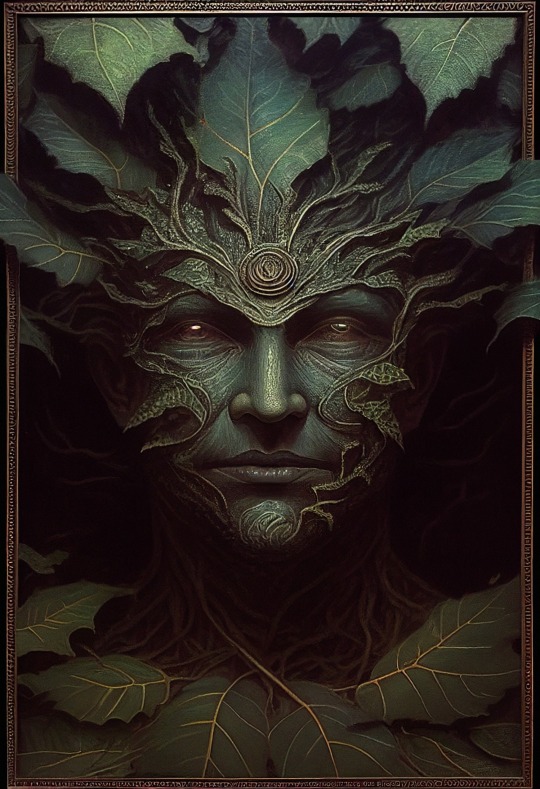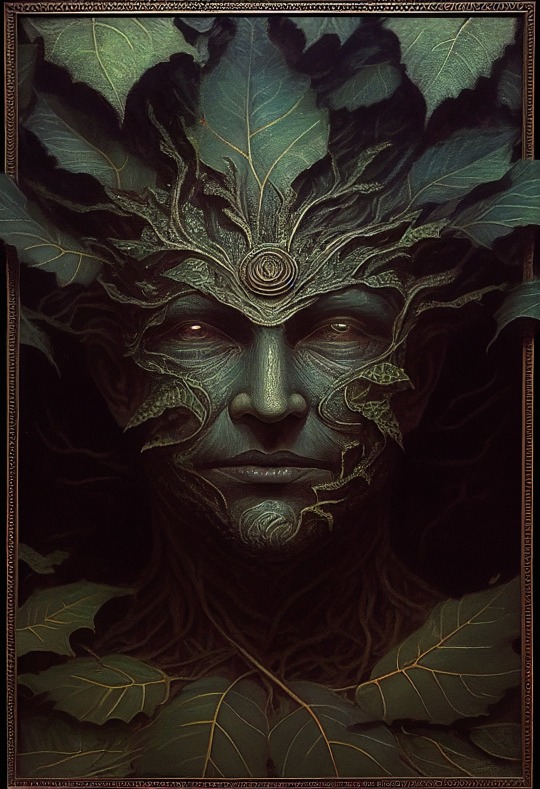#comminges
Explore tagged Tumblr posts
Text







En l'honneur du Nouvel An Chinois qui nous fait passer dans l'Année du Serpent, en voici quelques-uns !
Ici, le Serpent d'Adam et Eve, dans des bâtiments romans, parfois gothiques ou byzantins :
Le Mans, cathédrale Saint-Julien
Canaries, Gran Canaria, Las Palmas - Maison de Christophe Colomb
Lavaudieu (Auvergne)
Saint-Gaudens (Comminges) collégiale
idem
Monreale (Sicile) - Cathédrale
Palermo (Sicile), Palazzo dei Normanni - chapelle palatine
#serpent#année du serpent#nouvel an chinois#médiéval#art roman#art gothique#byzantin#arabo-normand#le mans#vitraux#adam et ève#espagne#gran canaria#las palmas#christophe colomb#saint-gaudens#comminges#italie#sicile#monreale#palerme#palermo#palazzo#palazzo dei normanni#palais des normands#lavaudieu#auvergne#sarthe
13 notes
·
View notes
Text

#coat of arms#blason#blazon#heraldry#europe#european#history#medieval#middle ages#count of comminges#comminges#cominges#helmet#crest
85 notes
·
View notes
Video
25/05/2013 tournage Waterproof Résurection par Dust... Via Flickr : un tueur de la KKK, société appartenant à l'immonde Kaalbuth qui recrute des adolescents pauvres des quartiers bas de la ville, sur le point d'éliminer la fille de l'ex inspecteur Georges Feelgood qui s'était infiltrée dans la société... un film produit par A.nonyme, réalisé par Michel Escaillas aussi à la caméra sur ce cliché Le tueur : Elie Cazaneuve La victime : Emma Chesnot a killer from the KKK, a company owned by the filthy Kaalbuth who recruits poor teenagers from the lower parts of the city, about to eliminate the daughter of ex-detective George Feelgood who had infiltrated the company... a film produced by A.nonyme and directed by Michel Escaillas un asesino del KKK, una empresa propiedad del asqueroso Kaalbuth que recluta a adolescentes pobres de los barrios bajos de la ciudad, a punto de eliminar a la hija del exdetective George Feelgood que se había infiltrado en la empresa... una película producida por A.nonyme y dirigida por Michel Escaillas
#pierreni#mister dust#flickr#photo#photographie#photography#court metrage#court métrage#cinéma#cinema#film policier#action#film d'action#comminges#kommingisthan#komingisthan#komingistan#saint gaudens#saint go#31800#marché aux volailles#parking
2 notes
·
View notes
Text


The Green Man by Talon Abraxas
Symbol of life and nature:
The most common and perhaps obvious interpretation of the Green Man is that of a pagan nature spirit, a symbol of man’s reliance on and union with nature, a symbol of the underlying life-force, and of the renewed cycle of growth each spring. In this respect, it seems likely that he has evolved from older nature deities such as the Celtic Cernunnos and the Greek Pan and Dionysus.
Some have gone so far as to make the argument that the Green Man represents a male counterpart - or son or lover or guardian - to Gaia (or the Earth Mother, or Great Goddess), a figure which has appeared throughout history in almost all cultures. In the 16th Century Cathedral at St-Bertrand de Comminges in southern France, there is even an example of a representation of a winged Earth Mother apparently giving birth to a smiling Green Man.
Because by far the most common occurrences of the Green Man are stone and wood carvings in churches, chapels, abbeys and cathedrals in Europe (particularly in Britain and France), some have seen this as evidence of the vitality of pre-Christian traditions surviving alongside, and even within, the dominant Christian mainstream. Much has been made of the boldness with which the Green Man was exhibited in early Christian churches, often appearing over main doorways, and surprisingly often in close proximity to representations of the Christ figure.
Incorporating a Green Man into the design of a medieval church or cathedral may therefore be seen as a kind of small act of faith on the part of the carver that life and fresh crops will return to the soil each spring and that the harvest will be plentiful. Pre-Christian pagan traditions and superstitions, particularly those related to nature and trees, were still a significant influence in early medieval times, as exemplified by the planting of yew trees (a prominent pagan symbol) in churchyards, and the maintenance of ancient “sacred groves” of trees.
Tree worship goes back into the prehistory of many of the cultures that directly influenced the people of Western Europe, not least the Greco-Roman and the Celtic, which is no great surprise when one considers that much of the continent of Europe was covered with vast forests in antiquity. It is perhaps also understandable that there are concentrations of Green Men in the churches of regions where there were large stretches of relict forests in ancient times, such as in Devon and Somerset, Yorkshire and the Midlands in England. The human-like attributes of trees (trunk-body, branches-arms, twigs-fingers, sap-blood), as well as their strength, beauty and longevity, make them an obvious subject for ancient worship. The Green Man can be seen as a continuing symbol of such beliefs, in much the same way as the later May Day pageants of the Early Modern period, many of which were led by the related figure of Jack-in-the-Green.
Symbol of fertility:
Although the Green Man is most often associated with spring, May Day, etc, there are also several examples which exhibit a more autumnal cast to the figure. For example, some Green Men prominently incorporate pairs of acorns into their designs (there is a good example in King's College Chapel, Cambridge), a motif which clearly has no springtime associations. In the same way, hawthorn leaves frequently appear on English Green Men (such as the famous one at Sutton Benger), and they are often accompanied by autumn berries rather than spring flowers. The Green Man in the Chapelle de Bauffremont in Dijon (one of the few to retain its original paint coloration) shows quite clearly its leaves in their autumn colours.
This may have been simple artistic license. However, acorns, partly due to their shape, were also a common medieval fertility symbol, and hawthorn is another tree which was explicitly associated with sexuality, all of which perhaps suggests a stronger link with fertility, as well as with harvest-time.
Symbol of death and rebirth:
The disgorging Green Man, sprouting vegetation from his orifices, may also be seen as a memento mori, or a reminder of the death that await all men, as well as a Pagan representation of resurrection and rebirth, as new life naturally springs out of our human remains. The Greek and Roman god Dionysus/Bacchus, often suggested as an early precursor of the Green Man, was also associated with death and rebirth in his parallel guise as Okeanus.
Several of the ancient Celtic demigods, Bran the Blessed being one of the best known, become prophetic oracles once their heads had been cut off (another variant on the theme of death and resurrection) and, although these figures were not traditionally represented as decorated with leaves, there may be a link between them and the later stand-alone Green Man heads.
There are several examples of self-consciously skull-like Green Men, with vegetation sprouting from eye-sockets, although these are more likely to be found on tombstones than as decoration in churches (good examples can be seen at Shebbear and Black Torrington in Devon, England). Such images might be interpreted as either representing rebirth and resurrection (in that the new life is growing out of death), or they might represent death and corruption (with the leaves growing parasitically through the decaying body).
The Green Man as archetype:
The very fact that images of the Green Man have appeared historically in such disparate and apparently unconnected locations have led some commentators, notably Roweena Pattee Kryder and William Anderson, to suggest that the figure is part of our collective unconscious, and represents a primeval archetype (in Jungian parlance) which is central to our relationship with Nature.
Phyllis Araneo has suggested that the appearance of the Green Man in European and worldwide art is a cyclical phenomenon triggered by times of crisis or significant change. For example, she suggests the proliferation of Green Man imagery after the 11th Century can perhaps be associated with feelings of relief and celebration after the widely predicted apocalypse of the millennium failed to materialize.
In the same way, the modern resurgence may have been triggered by the environmental crisis we are currently living through. In its modern revival, in the wake of James Lovelock’s Gaia Hypothesis and the birth of the modern Green movement, the Green Man can be seen as the archetype of the “conservator”, whose brief is to counsel us to take from the environment only what we need to survive and to conserve the rest, and to remind us of our responsibilities for the stewardship of the natural world. A quote from Mike Harding succinctly summarizes this position: “If anything on this poisoned planet gives us hope of renewal it is this simple foliate head that has been there in one form or another since the beginning.”
-The Enigma of the Green Man - Theories and Interpretations
44 notes
·
View notes
Text
I've already done the mun intro post, so, here's some obscure Rex facts for you guys:
I'm missing a muscle in my right wrist. No, it doesn't impede me, and many people are missing the same exact one, and don't even realize it.
My favorite ice cream flavor is mint chocolate chip.
In 2022 I got lost in the Canadian mountains without phone data and had to use a compass to find the US border.
On my mother's side of the family, I'm related to St. Bertrand of Comminges.
I'm learning the Finnish language in order to impress my Finnish girlfriend.
I spent 13 years not knowing the difference between a mango and a cantaloupe.
Legato has been my muse for 10 years, coming up in June.
5 notes
·
View notes
Text

The facade of Notre Dame de Paris,
Inscribed in a Renaissance frame, this remarkable view of Notre-Dame serves as an illustration for the ceremony of a church placed in a view, at the head of the second part of the Roman Pontifical written in 1485 by Piccolomini, Bishop of Pienza. Destined for John II de Mauléon, bishop of Saint-Bertrand-de-Comminges, this French copy was decorated around 1523-25, probably by the Anwerso painter and illuminator Noël Bellemare, who then occupied a house on the Notre-Dame Bridge. The choice of the Parisian cathedral for this opening image reflects the eminent authority it enjoyed... Christianity.
THE SYMBOLS OF THE FACADE
Symbolism is a way of thinking and sensitivity inherent in the Middle Ages.
It meets the facade in two ways:
- Number three.
Designed in a ternary mode, the facade is divided into three parts vertically and horizontally. This number three is the symbol of the Trinity, central mystery of faith and Christian life: one God in three separate divine persons between them (the Father, the Son and the Holy Spirit).
- Square and circle.
Without the towers, the facade looks like a large square. In the center, the circle of the rosewood fits into a smaller square. The circle and the square are traditional primordial symbols, already widely used in the Roman churches figuring out the cosmological order according to the Christian tradition.
The square represents the Earth (the four directions of space, or cardinal points, the four seasons, the four elements: earth, water, fire, air).
The circle is a symbol of Heaven and heavenly things. At the center of the great rose of Heaven is a smaller one: this central point is God, principle and end of everything. Thus, symbolically, through a game of simple geometric figures, the facade proclaims to all the mystery of the Incarnation, a distinctive sign of the Christian faith. "The Word became flesh and dwells among us." "(John 1:14) Permitted by the "yes" of the Virgin Mary, Jesus Christ, true God and true man, came to earth to save all mankind.
Enlightenment: Roman Pontifical at arms of John II de Mauléon, Bishop of Saint-Bertrand-de Comminges - Enlightenment, Christmas Bellemare, early XVI century - BnF, Ms. Latin 1226-2
4 notes
·
View notes
Text
For these and manie other valiauntises, noble feates, and victories, which God of his infinit goodnes daily gaue vnto him, the Prince was honnored and renound not onlie in his Realme, but also in other Realmes and quarters. He was also taken of the Kinge his father as the first and principall of his Cuntrie Councell, and as nature appeareth he was right deere and welbeloued of the Kinge, vntill such time as his fame appeared by the sinister report of some euell disposed people, wch laboured to make discension betweene the Kinge and the prince his sonn ; by reason whereof, and by th'actes of youth, which he excersised more then meanely, and for the greate recourse of people vnto him, of whom his courte was at all times more aboundant then the Kinge his father's, the Kinge suspected that he woulde vsurpe the Crowne he beinge aliue, which suspicious Jealosie was occasion that he in parte withdrewe his affeccion and singuler loue from the Prince.
But when this noble Prince was aduertised of his father's iealosie and mistrust by some his secret friends of the Kings Councell, he disguised himselfe in a gowne of blewe satten or damaske made full of iletts or holes, and at euerie ilet the needle wherewith it was made hanginge there by the thridde of silke, and about his arme he wore a doggs Collor sett full of S. S. of goulde and the terretts of the same also of fine golde. And thus apparrelled with greate Companie of Lords he came to the Kinge his father, who at that time lay at Westminster ; where at his comminge by his owne commaundement not one of his companie durst aduance himselfe further then the fire in the hall, notwithstandinge they were greatlie and ofte desired to the contrarie by the Lords and greate estats of the Kings Courte. And that the Prince had commaunded to giue the lesse occasion of mistrust to the Kinge his father ; but he himselfe accompanied of the Kings house to only passed forth to the Kinge his father, to whome after due salutacions he desired to show the intent of his minde in secrett manner. Then the Kinge caused himselfe to be borne in his chaire, (because he was diseased and might not goe) into his secrett chamber ; where in the presence of three or foure persons in whome the Kinge had his most confidence he commaunded the Prince to shewe the effect of his minde. Then the Prince kneelinge downe before his father saide to him these words : 'Most redoubted Lorde and father I ame this time come to your presence as your Liegeman, and as your sonn naturall, in all things to obey your Grace as my Soueraigne Lorde and father. And whereas I vnderstande that you haue me in suspecte of my behauour against your Grace, and that you feare I would vsurpe your Crowne against the pleasure of your highnes. Of my conuersacion your Grace knoweth that if you weare in feare of any man within your Realme of what estate soeuer he were, my duty were to the endainger of my life to punish that person, thereby to araise that sore from your harte. And then howe much rather ought I to suffer death to bringe your grace, that hath bene and yet be the most hardie and renowned Kinge of the worlde, from that feare that ye haue of me, that ame your naturall sonn and liegeman. And to that intent I haue this day by confession and by receauinge my maker prepared myselfe. And therefore most redoubted Lorde and father I desyre you in your honnor of God, for the easinge of your harte heere tofore your knees to slaye me with this dagger': (and at that worde with all reuerence he deliuered to the Kinge his dagger, sayinge) 'my Lord and father, my life is not so desirous to me that I woulde liue one daye that I shoulde be to your displeasure, nor I couet not so much my life, as I doe your pleasure and wellfare. And in your thus doinge here in the presence of those lords, and before God, and the daye of Judgement, I cleerelie forgiue you my death.' At these words of the Prince, and the Kinge taken with compassion of harte caste from him the dagger, and imbraced the Prince, and kissed him, and with effusion of teares saide vnto him : 'My right deere and hartelie beloued Sonn, it is of troth that I partlie had you in suspect, and as I now perceaue vndeserued on your part, but seeinge this your humilitie and faithfullness, I shall neither slay you nor frome hencefoorth anie more haue you in mistrust, for no reporte that shalbe made vnto me. And therefore I assure you vppon myne honnour.' And thus by his greate wisdome was the wrongfull imaginacion of his fathers hart utterlie avoyded,and himselfe restored to the Kings former grace and fauour.
Anonymous, The First English Life of Henry the Fifth, ed. C L. Kingsford, (written 1513, published Clarendon Press, 1911)
A partial modernisation can be read here. This account is believed to have been sourced from the (non-surviving) report of the Earl of Ormond, a member of Thomas, Duke of Clarence's household.
#henry v#henry iv#father and son#first english life of henry the fifth#early modern texts#political crisis of 1412#prince henry's dagger incident
13 notes
·
View notes
Photo

12 septembre 1213 : bataille de Muret ➽ http://bit.ly/Bataille-Muret Elle a lieu dans le cadre de la lutte contre les Albigeois menée par l’Église catholique contre l’hérésie et oppose : d’un côté Raymond VI, comte de Toulouse, Pierre, roi d’Aragon et seigneur de Montpellier et Bernard de Comminges ; de l’autre les troupes du roi Philippe Auguste commandées par Simon de Montfort, vicomte d’Albi, de Béziers et de Carcassonne
#CeJourLà#12Septembre#bataille#Muret#croisade#Albigeois#Église#catholique#hérésie#histoire#france#history#passé#past#français#french#news#événement#newsfromthepast
4 notes
·
View notes
Text




Lauragais (2) (3) (4) by Pableauo
Via Flickr:
(1) Blé encore vert, arbres et ciel chargé, juste avant un orage. Wheat still green, trees and cloudy sky, just before a storm. (2) Un ciel menaçant, comme on les aime. A threatening sky, as I like. (3) Les alentours de Saint-Bertrand-de-Comminges. The surroundings of Saint-Bertrand-de-Comminges. (4) La tour de la Basilique Saint Just dans le Comminges. Vue depuis la colline de Saint-Bertrand-de-Comminges, elle émerge au-dessus des arbres, au milieu d'une ambiance rendue verdoyante par une petite pluie plutôt inhabituelle à la mi-août. On devine le village de Barbazan au loin, dans la brume. The tower of the Saint Just Basilica in Comminges Seen from the hill of Saint-Bertrand-de-Comminges, it emerges above the trees, in the middle of an atmosphere made green by a rather unusual little rain in mid-August. We can see the village of Barbazan in the distance, in the mist.
7 notes
·
View notes
Text
Saint of the Day – 16 October – Saint Bertrand of Comminges (c1050-1123) Bishop
Saint of the Day – 16 October – Saint Bertrand of Comminges (c1050-1123) Bishop of Comminges, in the Archdiocese of Toulouse, France, Reformer – both religious and civil, Peace-maker, Miracle-worker. Born as Bertrand de l’Isle in c1050 in France and died on 16 October 1123 of natural causes. Patronage – of the Town named after him, Saint-Bertrand-de-Comminges, France. He was Canonised in 1222 by…

View On WordPress
2 notes
·
View notes
Text
comminges: take away the mutton. i hope [porthos] may sup pleasantly, especially as i have a piece of news which will, i am sure, give him good appetite.
porthos: is mazarin dead?
comminges: i regret to tell you he is wondrously well
porthos: so much the worse.
nobody likes mazarin.
0 notes
Link
0 notes
Text

La basilique Saint-Just de Valcabrère au premier plan et la cathédrale Notre-Dame de Saint-Bertrand-de-Comminges
1 note
·
View note
Video
12/10/2005 la Houmassere Rouède 31160 par Dust... Via Flickr : une époque où les millions de pixels se comptaient Sur une main à laquelle il manque des doigts ;D
a time when millions of pixels were counted on a hand that was missing fingers ;D
una época en la que se contaban millones de píxeles en una mano a la que le faltaban dedos ;D
si une action n'est pas reproductible par des milliards de gens pendant des milliards d'années, cette action n'est pas bonne
If an action is not reproducible by billions of people for billions of years, this action is not good.
si la acción no es reproducible por mil millones de personas por mil millones de años, esta acción no es bueno.
#pierreni#mister dust#flickr#photo#photographie#photography nature#paysage#lumiere#nuage#nuages#photo de paysage#landscape#paisaje#france#montagne#mountain#sierra#montana#montaña pyrénées#pyrenees#chaine des pyrénées#comminges#kommingisthan#komingisthan#roue#paysage de rouede#photo de rouede#rouèd#roued#rouede
1 note
·
View note
Text

The Enigma of the Green Man
Symbol of life and nature: The Celtic nature god Cernunnos from the Gundestrup Cauldron (1st Century BCE, now in the National Museum of Denmark in Copenhagen)
The Celtic nature god Cernunnos from the Gundestrup Cauldron (1st Century BCE, now in the National Museum of Denmark in Copenhagen)
The most common and perhaps obvious interpretation of the Green Man is that of a pagan nature spirit, a symbol of man’s reliance on and union with nature, a symbol of the underlying life-force, and of the renewed cycle of growth each spring. In this respect, it seems likely that he has evolved from older nature deities such as the Celtic Cernunnos and the Greek Pan and Dionysus.
Some have gone so far as to make the argument that the Green Man represents a male counterpart - or son or lover or guardian - to Gaia (or the Earth Mother, or Great Goddess), a figure which has appeared throughout history in almost all cultures. In the 16th Century Cathedral at St-Bertrand de Comminges in southern France, there is even an example of a representation of a winged Earth Mother apparently giving birth to a smiling Green Man.
Because by far the most common occurrences of the Green Man are stone and wood carvings in churches, chapels, abbeys and cathedrals in Europe (particularly in Britain and France), some have seen this as evidence of the vitality of pre-Christian traditions surviving alongside, and even within, the dominant Christian mainstream. Much has been made of the boldness with which the Green Man was exhibited in early Christian churches, often appearing over main doorways, and surprisingly often in close proximity to representations of the Christ figure.
Incorporating a Green Man into the design of a medieval church or cathedral may therefore be seen as a kind of small act of faith on the part of the carver that life and fresh crops will return to the soil each spring and that the harvest will be plentiful. Pre-Christian pagan traditions and superstitions, particularly those related to nature and trees, were still a significant influence in early medieval times, as exemplified by the planting of yew trees (a prominent pagan symbol) in churchyards, and the maintenance of ancient “sacred groves” of trees.
Tree worship goes back into the prehistory of many of the cultures that directly influenced the people of Western Europe, not least the Greco-Roman and the Celtic, which is no great surprise when one considers that much of the continent of Europe was covered with vast forests in antiquity. It is perhaps also understandable that there are concentrations of Green Men in the churches of regions where there were large stretches of relict forests in ancient times, such as in Devon and Somerset, Yorkshire and the Midlands in England. The human-like attributes of trees (trunk-body, branches-arms, twigs-fingers, sap-blood), as well as their strength, beauty and longevity, make them an obvious subject for ancient worship. The Green Man can be seen as a continuing symbol of such beliefs, in much the same way as the later May Day pageants of the Early Modern period, many of which were led by the related figure of Jack-in-the-Green.
Symbol of fertility: Although the Green Man is most often associated with spring, May Day, etc, there are also several examples which exhibit a more autumnal cast to the figure. For example, some Green Men prominently incorporate pairs of acorns into their designs (there is a good example in King's College Chapel, Cambridge), a motif which clearly has no springtime associations. In the same way, hawthorn leaves frequently appear on English Green Men (such as the famous one at Sutton Benger), and they are often accompanied by autumn berries rather than spring flowers. The Green Man in the Chapelle de Bauffremont in Dijon (one of the few to retain its original paint coloration) shows quite clearly its leaves in their autumn colours.
This may have been simple artistic license. However, acorns, partly due to their shape, were also a common medieval fertility symbol, and hawthorn is another tree which was explicitly associated with sexuality, all of which perhaps suggests a stronger link with fertility, as well as with harvest-time.
Symbol of death and rebirth: Green Man in the form of a skull on a gravestone in Shebbear, Devon, England (photo Simon Garbutt)
Green Man in the form of a skull on a gravestone in Shebbear, Devon, England
The disgorging Green Man, sprouting vegetation from his orifices, may also be seen as a memento mori, or a reminder of the death that await all men, as well as a Pagan representation of resurrection and rebirth, as new life naturally springs out of our human remains. The Greek and Roman god Dionysus/Bacchus, often suggested as an early precursor of the Green Man, was also associated with death and rebirth in his parallel guise as Okeanus.
Several of the ancient Celtic demigods, Bran the Blessed being one of the best known, become prophetic oracles once their heads had been cut off (another variant on the theme of death and resurrection) and, although these figures were not traditionally represented as decorated with leaves, there may be a link between them and the later stand-alone Green Man heads.
There are several examples of self-consciously skull-like Green Men, with vegetation sprouting from eye-sockets, although these are more likely to be found on tombstones than as decoration in churches (good examples can be seen at Shebbear and Black Torrington in Devon, England). Such images might be interpreted as either representing rebirth and resurrection (in that the new life is growing out of death), or they might represent death and corruption (with the leaves growing parasitically through the decaying body).
The Green Man by Talon Abraxas
43 notes
·
View notes
Text
Les carnets de campagne du commandant Montalègre.
Le commandant Joseph Bernard Montalègre, a rédigé pendant la guerre des carnets qui constituent un important témoignage. Conservés par son épouse puis transmis à ses descendants, ils ont été publiés en 2009 par le docteur Jacques Montalègre sous le titre : « Carnets de campagne de la Grande Guerre (1914-1918) du Commandant Montalègre » avec l’aide de l’association du mémorial du Comminges à…

View On WordPress
0 notes

